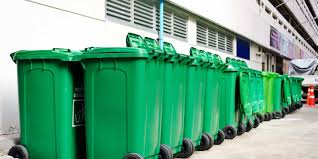Dumpster Sizing 101: A Guide to Choosing the Correct Container

May 3, 2023
Dumpster Sizing 101: A Guide to Choosing the Correct Container
Dumpsters are important tools for managing trash, but it’s important to get the right size to get rid of trash quickly and cheaply. If you choose the wrong size dumpster, it can lead to higher costs, safety risks, and damage to the environment. In this article, we will provide a guide on how to choose the right dumpster size for your project.

Factors to Consider When Choosing a Dumpster Size
Several factors determine the right size dumpster for your project. The first factor is the type of project or activity you are undertaking. For instance, a roofing project generates different waste amounts and types compared to a kitchen renovation. The second factor is the amount and type of waste generated.
Heavy debris such as concrete and bricks requires larger dumpsters than regular household waste. The third factor is the available space for the dumpster. You should consider the location of the dumpster and the clearance space around it. Finally, the duration of the project also affects the dumpster’s size. Longer projects require larger dumpsters than shorter ones.
Types of Dumpster Sizes
Dumpsters come in various sizes, ranging from mini dumpsters with a capacity of 2-3 cubic yards to extra-large dumpsters with a capacity of 40 cubic yards or more. Mini dumpsters are suitable for small residential projects, while extra-large dumpsters are suitable for commercial projects.
Small dumpsters with a capacity of 4-6 cubic yards are suitable for small renovations, while medium dumpsters with a capacity of 10-15 cubic yards are suitable for larger projects, such as whole-house cleanouts. Large dumpsters with a capacity of 20–30 cubic yards are suitable for commercial construction projects.
How to Choose the Right Dumpster
Size To choose the right dumpster size, you should evaluate the amount of waste you expect to generate. You can estimate this by assessing the size of the project, the type of waste, and the duration of the project. You should also consider the type of waste generated. If you are disposing of heavy debris, such as concrete, you should opt for a larger dumpster than if you are disposing of regular household waste.
Additionally, you should consider the available space for the dumpster. Ensure that there is enough clearance space around the dumpster to avoid safety hazards. Finally, seek guidance from a waste removal company to help you choose the right dumpster size.
Benefits of Choosing the Right Dumpster Size
Choosing the right dumpster size has numerous benefits. Firstly, it ensures cost-effective waste management. Opting for a larger dumpster than necessary leads to increased costs due to unused capacity. Secondly, it improves safety by preventing overfilling of the dumpster.
Overfilled dumpsters pose a safety hazard to the environment and the people handling the waste. Thirdly, choosing the right dumpster size reduces the environmental impact by ensuring that the waste is disposed of appropriately.
Conclusion
Choosing the right dumpster size is crucial for efficient and cost-effective waste management. By considering factors such as the type of project, the amount and type of waste, the available space, and the duration of the project, you can select the right dumpster size. Additionally, seeking guidance from a waste removal company can help you make an informed decision. By choosing the right dumpster size, you can reduce costs, improve safety, and reduce the environmental impact.
